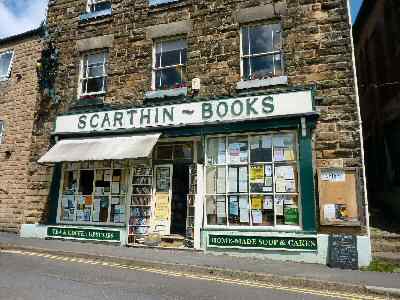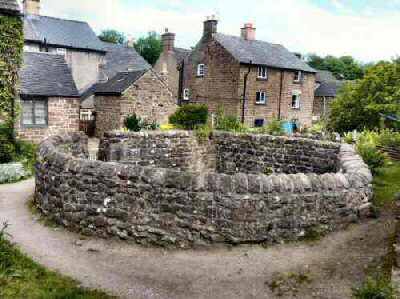CROMFORD
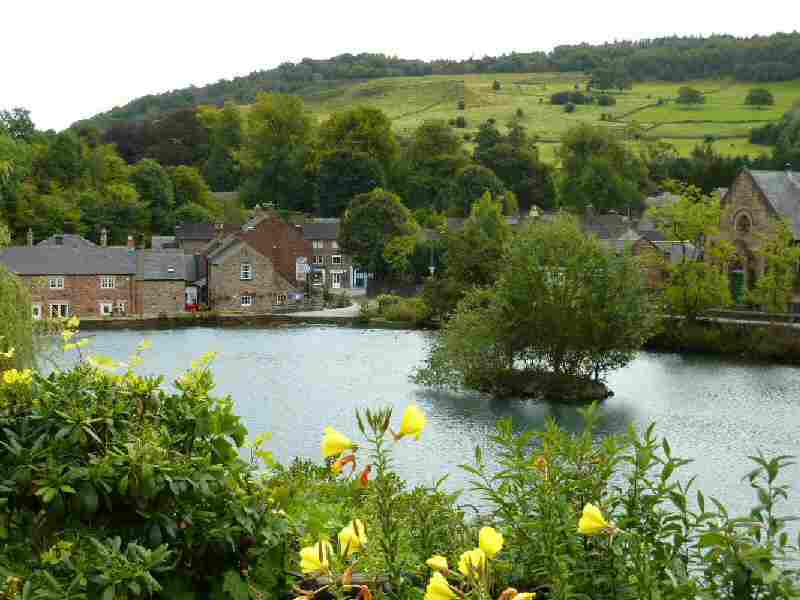
PLAN YOUR DAY OUT
Location: Cromford is off the A6 from Belper to Matlock (SK295566), Cromford Station is on the Derby to Matlock line.
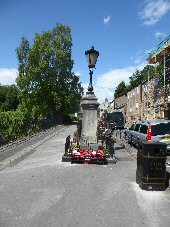
Visit: The Visitor Centre at Building 17 of the 15-mile-long Derwent Valley Mills World Heritage Site. It allows you to explore all the key heritage and wildlife sites using interactive touch screens. The exhibition continues with the story of the Derwent Valley’s global impact on the cotton industry, where the mill is brought to life as part of the Arkwright Experience. – Explore Masson Mill’s extensive collection of historic textile machinery within Sir Richard Arkwright’s 1783 water-powered cotton spinning mill. – Go on a walk by the canal.
Refreshments: Café facilities are available at Cromford Mill and Wheatcroft’s Wharf. The village has many cafés, pubs, and restaurants to suit all tastes.
Walk: Beautiful scenery, abundant wildlife, and world-renowned heritage make the Cromford and High Peak Junction Walk very special. From Cromford Wharf, where there are several interesting canal buildings, follow the towpath for one and a quarter miles. On reaching High Peak Junction, there is a collection of interesting old railway buildings to inspect before heading up the High Peak Trail. After a short distance, you leave the trail and begin the return journey to Cromford, often called the ‘Cradle of the Industrial Revolution’.
Places of Special Interest in the Locality: Mining Museum and Temple Mine at Matlock Bath, where you get a very realistic impression of what the conditions used to be like for men who toiled underground. After completing the museum tour, you can visit Temple Mine, which opened in 1922, but check the opening times first as they may differ. – National Stone Centre, Wirksworth, tells the story of stone and its geological and industrial history. Outside the visitor centre, the quarry trail takes you back over three million years. – The Heights of Abraham, where you can take a spectacular journey by cable car to explore two show caverns, follow woodland trails and enjoy the magnificent view from the Treetops café and restaurant.
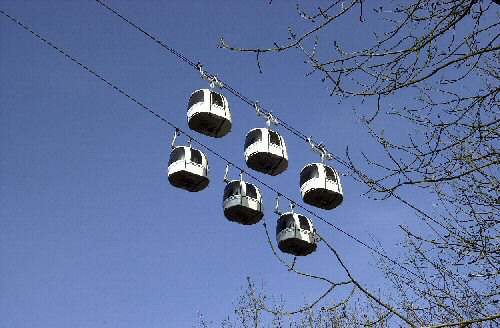
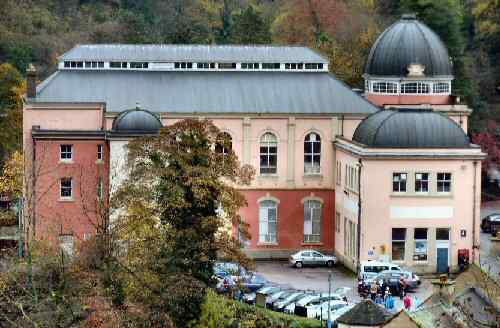
INTRODUCTION
Cromford is a village of contrasts. Its lower half rests by the gently flowing River Derwent, and the upper climbs steeply up Cromford Hill to Black Rocks, with outstanding views. Majestic as the scenery undoubtedly is, it is not that which attracts visitors from all over the world to Cromford. But to look around where Sir Richard Arkwright built his cotton mills.
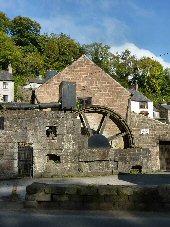
However, many new visitors to Cromford do not realise that it was the first purpose-built industrial village and encompasses the Site of the world’s first successful water-powered cotton mill. It was from Cromford that its revolutionary methods spread across the rest of the world. Frequently referred to as the ‘Cradle of the Factory System,’ Cromford and the Derwent Valley achieved World Heritage Status in 2001. The Site extends approximately 15 miles from Masson Mill to the former Derby Silk Mill. It is the only World Heritage Site in the East Midlands.
Cromford has some of the best examples of industrial housing in Britain. It stands as an international monument to the Industrial Revolution, and its Conservation Order status encourages the enhancement and repair of these historic buildings.
SIR RICHARD ARKWRIGHT
The driving force behind the revolution was Richard Arkwright. Having obtained a patent on his spinning frame. He first set up a mill at Nottingham using horsepower. When that proved incapable of further development, he moved to Cromford. He leased a site west of Cromford Bridge, close to Smelting Mill Green, where lead ore was smelted.
Arkwright harnessed the water power of the Bonsall Brook and the Cromford Sough to drive his machinery. The latter originally drained the lead mines between Wirksworth and Cromford. It powered the first mill until after obtaining a further patent. A second mill was built in 1776 and was fully operational the following year. The new mill, much larger than the first, was powered by two water wheels but was destroyed by fire in 1890.
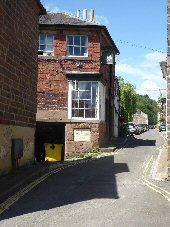
As Arkwright’s enterprise expanded, the demand for more water power increased. The Greyhound Pond, behind the hotel of the same name, was an essential part of the system, along with a series of ponds along Bonsall Brook. The purpose of its creation, as industrial production expanded, was purely functional – to ensure a constant head of water for the wheels of the mills to drive the machinery.
WORKFORCE
Arkwright faced a significant problem in 1771: Cromford was a tiny hamlet. The situation became particularly acute in 1776 when the second mill was built. However, Arkwright had a flair for business from an early age and was not daunted by the lack of available workers. He set about attracting a workforce by building good-quality houses with privies, allotments, and pigcotes. Arkwright paid higher wages than those available for farm work and supplied working clothes for both sexes. He rewarded his overseers with a cow in recognition of excellent work. Richard Arkwright II built a school and schoolhouse in 1832.
THE VILLAGE
The three-storey houses on North Street are among the finest examples of industrial housing anywhere. Here, you can see traces of the long upper windows on both sides of the street, which provided maximum light for the outworkers at their machines. It is where the weavers set up their looms to make the yarn from the mills into fabric.

The houses on Cromford Hill came after North Street, some having two and others three storeys. As a testament to its excellent construction, much of the original housing in the village remains today, and there is a ready demand.
Arkwright did not stop there and also provided other local amenities. He even obtained a charter for a market in front of the Greyhound Hotel. The markets were held on Saturdays from 1790 onwards for nearly 100 years, and prizes were awarded to the traders who had the best stalls and sold the most goods.
CELEBRATIONS
Every September, Arkwright held a festival for the enjoyment of his workpeople and their families. In 1776, he completed his second mill and held a large party to celebrate. His workers and their children paraded proudly around the village, led by a large band. After this had finished, they returned to the mill for food and refreshment. The celebrations continued into the evening with a ball.
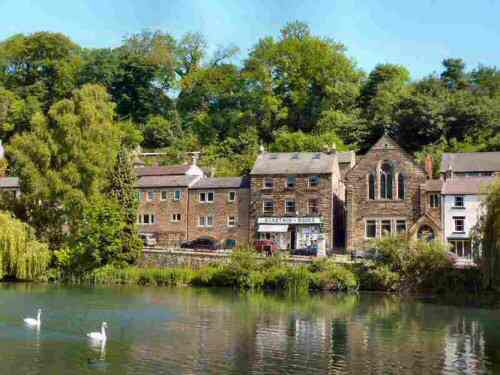
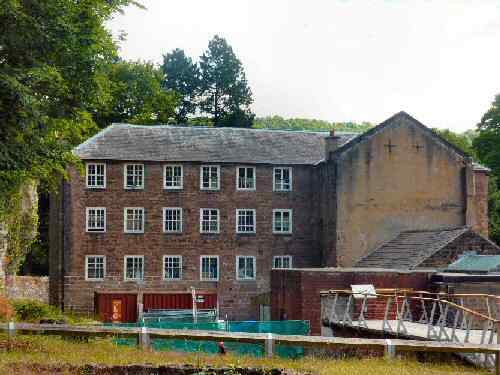
TEN FASCINATING FACTS ABOUT CROMFORD
1. Arkwright’s mills were extensively copied in Great Britain and abroad, and Cromford became a template for other factory villages.
2. Cromford has some of Britain’s best examples of industrial housing and stands as an international monument to the Industrial Revolution. A Conservation Order protects the village and encourages the enhancement and repair of historic buildings.
3. The houses Arkwright erected for his employees were well-built and described as models of comfort and neatness. As a result of all his efforts, the Victorians looked upon him as ‘The Father of the Factory System’.
4. Masson Mill, built in 1783, was the only Arkwright mill to use the River Derwent, which provided a power source ten times greater than his first mill at Cromford.
5. After the second Cromford Mill became operational, Arkwright’s empire grew, and many more mills followed in Derbyshire, Lancashire, Staffordshire and Scotland. As a result, he became wealthy and famous and was knighted in 1786.
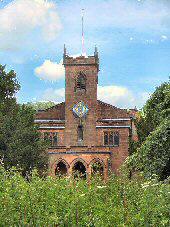
6. At about the same time, he began building a new home, Willersley Castle, that overlooked his Cromford Mills and St Mary’s Church. Unfortunately, he died on 3 August 1792, before either had been completed.
7 Although opened after the death of Sir Richard Arkwright, he was a prime mover in the decision to construct the Cromford Canal. It linked up with the Erewash Canal at Langley Mill, which ran into the River Trent. Later, a railway line was built to run from High Peak Junction to Whaley Bridge.
8. The bridge over the Derwent is one of the oldest in England. Alongside are the remains of a bridge chapel and a fishing pavilion. The latter is the same design as the one in Beresford Dale, which Charles Cotton and Izaak Walton frequented.
9. Cromford Station, a splendid piece of railway architecture, is on the Derby to Matlock line. The line is one of the prettiest in the country. It featured on the cover of Oasis’s first number-one single ‘Some Might Say’ in 1995, which includes the lyrics “.. standin’ at the station, in need of education in the rain”. The river, canal, road, and rail often run closer together than anywhere in England.
10. From the marketplace, a narrow one-way road leads to the old mining settlement of Scarthin. You can buy a book at the bookshop 24 hours a day and get a cup of coffee and a meal during regular hours.
Cromford and High Peak Junction Walk
